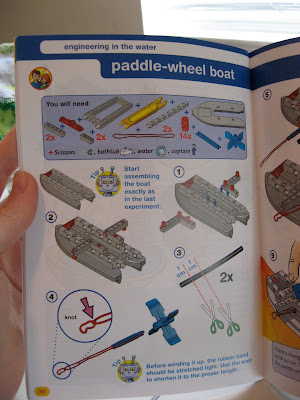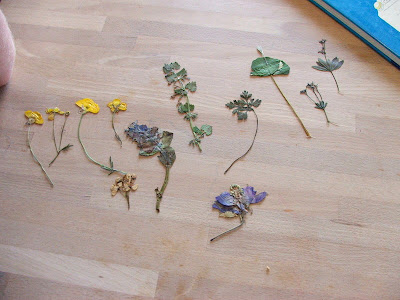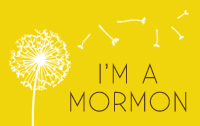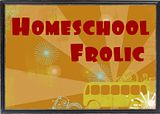This is the first in a two part series about education and an older adopted child. I asked my sister, Kami, to express some of her feelings about education and adoption as she adopted a 7 year old. Kami discovered she had a lot to say! We split her thoughts into two posts. Kami currently lives in Provo where her hsuband attends BYU.I am not a trained educator and I do not homeschool. I’ll just say that up front. However, between my husband, my adopted daughter, and myself, I have been exposed to several different forms of education and non-education. For the sake of coherency, I’ll discuss my husband’s and my background in education first. Then in my next post, I’ll share my daughter’s background and what we’ve worked on with her.
Personally, I loved elementary school, hated middle school, and really loved high school. My family moved frequently so I attended schools in many different states—some year-round, most with the traditional summer off. In elementary school I started off slow, in fact I was in remedial reading for a year. I never thought much about it, in fact I felt pretty lucky because I was able to play a lot of games on the computer and paint in that class (what those had to do with reading, I really couldn’t say because I don’t remember, but I loved it). At another point in elementary school, I was in a work-at-your own-pace math class with several different grades all in it together. That didn’t work well for me; I remember goofing around a lot and very little classroom discipline. However, one of my friends, Nathan, finished our textbook and had started the next grade level up by the end of the year.
Middle school I detested for several reasons, mostly social, but frankly I don’t think they have enough advanced or honors classes at that level to keep it challenging either. Then I had one random year at a school with 300 pupils in grades 7-12, and absolutely no classes other than the basics. So basic in fact, that the principal agreed to let me be in the psychology class that had previously only been allowed to 11th and 12th graders (I was in 9th grade) because my mother and I were fairly disgusted with the class choices. I was offered money almost weekly to allow people to cheat off me in that class. I was also frequently asked if my younger sister was a genius (she was two grade levels ahead in math—but in our previous school that was fairly common). What was I supposed to say, “No, actually you guys are just a bunch of backward hicks?” That’s what I thought anyway.
The rest of high school I adored. We moved to a much larger town (in North Dakota standards), which was very conservative. It’s kind of like going back twenty years in time living there. My high school offered plenty of AP programs that made school more challenging, as well as a variety of other classes. I arranged my whole senior year schedule around my floral design class. When I went to university I had no difficulty whatsoever in adjusting and didn’t find it any harder than my difficult classes in high school.
After graduating, I attended a couple different community colleges just for fun (one is the largest in the country), and found them rather pathetic—generally big high schools that aren’t challenging at all. In all I attended five different elementary schools, one middle school, two high schools, three universities and two community colleges.
My husband, on the other hand, only experienced one year in our public school system. Not because he was homeschooled; he was a foreign exchange student to New Jersey. He managed to learn English (yes, he had rudimentary knowledge before coming here, but was far from fluent) and complete 9th and 10th grade requirements in that one year. He thought it was easy. Ridiculously easy. But then in his native country he had gone to a private Catholic school, with the uniforms, mandatory mass, etc. A school where most of the senators’ kids and the president’s kids attended. A bit elite and very demanding. He also had private tutors (for English) and said he spent almost every evening, all evening, doing homework.
Once he graduated from high school, he attended the top university in the country. (He’s from Bogotá, Colombia, which is known as the Athens of South America because of its well-respected schools.) He then went to a private Catholic university for a year and then finally spent a semester at a military university. Upon moving to the States, he went to a community college for a year where he brushed up on his English and did some generals not required in Colombia, and then finished his degree at ASU. He thought ASU was as challenging as the universities he attended in Colombia, and that the community college was a practical way to save money rather than paying the high university tuition for classes that transferred straight across anyway.
I wanted to share those backgrounds because our experiences shaped our expectations for our children and their schooling. Both my husband and I want our children to learn to work hard. That is our main goal. My husband is much better at this than I ever was. He works at school. His mentality is partly shaped by his country (as mine is). In Colombia there aren’t very many good jobs, many taxi drivers are engineers but lack the connections to be hired. You have to work hard to survive. I grew up believing that I could succeed easily at whatever field I chose, and so I kind of half-worked and complained if I actually struggled at something (AP Calculus comes to mind) and then I never really learned it, just managed to scrape by. In college when I was exploring careers, and computer systems was an area of interest to me, I found out how much calculus was required, and I thought, “Oh, well, I’ll do something else then.” Pathetic, really. I want my children to be like my husband. My father expressed once to me that he wished his kids had been a little dumber, because if something didn’t come easily to us like most things normally did, we generally gave up. We grew up lazy—at least academically speaking (with one notable exception).
So how does this tie into public education? Basically because we both agree that public schools, on average, are great and the curriculum can prepare a child well for college and careers.
But the key is the desire to learn and work hard, which is taught by parents, not the school. I frequently told my daughter during her end of the year testing that I thought the testing was a joke and that I could care less how she did on it. I think more important than any test she ever takes or material on that test, is the lesson I teach her when I make her continue working on a homework problem till she gets it right. I hate the message, “Do your best, that’s all we can expect.” That “best” implies simply operating at their existing level of competence with no additional work to become better. Really, I expect more. I expect hard work, improvement and thoroughness.
My daughter recently moaned to me about a piano piece, “You can’t expect me to play it perfectly!” Well, actually, yes I can and do. The piece was at her level; all she needed was additional practice to make it perfect. It was certainly not impossible.
I do wonder about how to motivate learning without relying on grades as a benchmark. Sometimes in school it is easy to get that A grade without learning anything. And while you have some fabulous teachers, there are some horrid teachers too. Also, I think as far as public schools are concerned, middle school is the low point. There’s generally no advanced or honor classes yet, kids are mean, and peer pressure is at it’s height. If I did homeschool, I would do it during my children’s middle school years.
That actually had been my plan. By the time my first child hit junior high, I would be done having kids, all the rest of my kids would be in elementary school, and I would homeschool just for those few years of middle school. I could focus on that one child (or maybe two). She would be old enough for me to actually talk with about more advanced subjects without hesitation and analyze deeper issues. And then hopefully by the time that child returned to high school she would be mature enough and balanced enough (done with puberty) to be her own person and not as influenced by peer pressure. And prepared to work hard in high school.
Then life happened and Ana came home and plans changed.
 How to Catapult a Castle: Machines that Brought Down the Battlements by James De Winter is awesome. Especially if you have a daughter that is a princess and a son who is a knight. We read this book over a dozen times and my children could have read it over a dozen more. Gold Star Rating!
How to Catapult a Castle: Machines that Brought Down the Battlements by James De Winter is awesome. Especially if you have a daughter that is a princess and a son who is a knight. We read this book over a dozen times and my children could have read it over a dozen more. Gold Star Rating! Move it! Work It!: A Song About Simple Machines by Laura Purdie Salas has to be one of our favorites. Each page has words that can be sung to the tune of Kookaburra Sits in the Old Gum Tree but pertains to a simple machine. So you sing things like, "Lift, use a lever, lift, use a lever . . ." Sorry, I couldn't remember the rest and my daughter who has them memorized is too busy on starfall.com to help me out.
Move it! Work It!: A Song About Simple Machines by Laura Purdie Salas has to be one of our favorites. Each page has words that can be sung to the tune of Kookaburra Sits in the Old Gum Tree but pertains to a simple machine. So you sing things like, "Lift, use a lever, lift, use a lever . . ." Sorry, I couldn't remember the rest and my daughter who has them memorized is too busy on starfall.com to help me out. Simple Machines: Levers by David Glover was informative. I didn't know tweezers were levers. Or nutcrackers. Or scissors. The things you learn. (Please don't mock my ignorance. My hubby has--extensively.)
Simple Machines: Levers by David Glover was informative. I didn't know tweezers were levers. Or nutcrackers. Or scissors. The things you learn. (Please don't mock my ignorance. My hubby has--extensively.) The following pictures are of us doing lever "experiments." I feel lame saying experiment because you aren't experimenting, you're explaining what a lever is and does. But, the guidebook says experimenting so I shall as well.
The following pictures are of us doing lever "experiments." I feel lame saying experiment because you aren't experimenting, you're explaining what a lever is and does. But, the guidebook says experimenting so I shall as well.
 Scissors. We talked about how much extra force you get putting the fulcrum close to what you are cutting.
Scissors. We talked about how much extra force you get putting the fulcrum close to what you are cutting.





















































